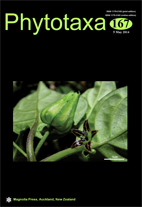Abstract
The species Piper petiolatum de Candolle (1866: 161) was first described based on specimens collected by J. D. Hooker and T. Thomson from Khasia hills and by W. Griffith (Kew Distribution numbers 4405 & 4410, these numbers were assigned in 1860’s at Kew before distributing the specimens to different herbaria) from East Bengal (present day Bangladesh – however, the labels on the sheets reveal that the Griffith specimens were actually collected from NE India, which is discussed below). Three years later, in A.P. de Candolle’s Prodromus, A.C.P. de Candolle cited these specimens under Chavica petiolata de Candolle (1869: 389), but did not mention his earlier publication of Piper petiolatum nor was the name listed it in the ‘Species e Pipere exclusae’. Eventually, Hooker in Flora of British India (1886: 84) also overlooked that this species name was already published under Piper Linnaeus (1753: 28) by A.C.P. de Candolle and transferred Chavica petiolata to Piper and cited his name as the author made the new combination. However, Hooker observed that the Khasian specimens quoted by A.C.P. de Candolle were actually of Piper thomsonii (de Candolle 1869: 389) Hooker (1886: 87), which was described along with Chavica petiolata. The former species is often treated as a synonym of Piper sylvaticum Roxburgh (1820: 158) (e. g. Long, 1984), although as stated by Gilbert and Nianhe (1999) certain discrepancies exist.

